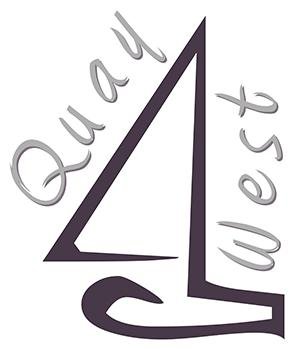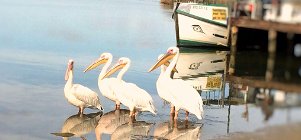West Coast & Activities
Go back in time to the surrounding towns on your West Coast Holiday
Saldanha is the first destination on your South African holiday along the West Coast. It has a long, interesting maritime history dating back to 1601 when Dutch sailor Joris van Spilenberg sailed past the bay. Mistaking it for Aguada de Saldanha (‘the watering place of Saldanha’, after the Portuguese admiral António de Saldanha) – the early Portuguese name for Table Bay – he recorded the name Saldanha in his logbook, while the bay originally named Aguada de Saldanha was renamed Table Bay.
The history of Langebaan is closely related to that of nearby Saldanha. Founded around 1870, the name Langebaan is translated as ‘long track’ or ‘long course’. The origin of the name is somewhat obscure, with no fewer than four explanations. In 1909 a whaling operation was established at Donkergat, northwest of Langebaan, across Saldanha Bay. Today Langebaan is well-known for its lagoon and the West Coast National Park.
Centred around the Langebaan Lagoon, the West Coast National Park covers 30 000 ha of wetlands, strandveld and unspoilt coastline. The 5 600 ha lagoon ranks as a wetland of international importance and supports up to 50 000 waterbirds at times – regularly, there may be as many as 30 000 migrant waders present. For birding enthusiasts, there are two bird hides overlooking the lagoon and one in the salt marshes.
The Fossil Park explains the fossil-rich area of Langebaanweg which is internationally known for its wealth of fossils of extinct animals, dating back between seven and five million years. At this time, the shoreline extended to Langebaanweg which was situated at the mouth of an early Berg River, and the prevailing warm and moist climatic conditions supported lush vegetation.
Situated about 6 km upstream from the mouth of the Berg River, Velddrif has been an important fishing centre for over a century. The town is especially known for its bokkoms, a typical West Coast delicacy. Harders (mullet) caught in nets in the Berg River estuary are salted and then dried in bunches, an activity that can be seen at the drying sites upstream from the town.
The lower Berg River is an important wetland for waterbirds, which constitute just over half of the 250 bird species recorded to date. At times, over 20 000 birds are attracted to the estuary and its floodplains.
ST Helena Bay was named after the mother of Roman emperor Constantine the Great by the Portuguese navigator Vasco da Gama, who landed here on 7 November 1497. A monument was erected just East of Stompneus Bay in 1969 to commemorate the 500th anniversary of Da Gama’s birth, while the Vasco da Gama Nautical Museum at Shelley Point depicts his voyage around the Cape of Good Hope in search of a sea route to India. St Helena Bay is the centre of the country’s fishing industry and is also noted for its catches of rock lobster and snoek.
Paternoster is a typical West Coast seaside village with small whitewashed fisherman’s cottages and it is known for its crayfish. The Latin name means ‘Our Father’, and it is generally assumed that the village was named after the prayers said by shipwrecked Catholic sailors. The earlier name, St Martin’s Paternoster, was used on maps until 1693.
The last leg of your South African holiday on the West Coast leads to Vredenburg, located in the centre of a prosperous wheat and wool farming area. It was laid out in 1883 near the site of a freshwater spring that gave rise to constant quarrels between two neighbouring farmers. In 1875 a church was built, and, as the church often had to settle disputes, it was decided to rename the village Vredenburg (‘town of peace’).
Activities
Discover the waters of the Berg River region
The Berg River offers safe fishing, skiing, canoeing, sailing, or just puttering around in boats. Tailor made boat trips starting from Bokkom-Laan promise to be a great river experience for beautiful views and birdlife.
Perfect sailing spot as the prevailing South-Easter blows off-shore, flattening the seas. Stompneus Pint blocks the South Atlantic swells, so you get a flat sea with a fresh wind.
A wonderful experience is to launch a canoe up-river and gently paddle down with the tide, maybe enjoy a picnic on an island midstream. The birds tend to ignore you when you silently paddle past, so its’ a great opportunity to take some astounding photos.
Port Owen
South Africa’s first and still best deep-sea residential marina, is one of the best there is. Because it is up-river and thus protected from ocean swells, the boats can lie safely in their berths. A restaurant and pub as well as a yacht club add to the facilities. A workshop and crane are also available. Here you can have a home for your boat.
Miles of white beaches
All the way from Laaiplek to Elandsbaai you can walk along clean, white, uncrowded beaches. The water is comparatively warm too, since St Helena Bay is fairly shallow and has a sandy bottom which warms up the seawater. You can see fishermen standing in waist-deep water for hours.
Fantastic fishing
When the South-Easter blows the surface water around Stompneus Point out to sea, the nutrient-rich bottom water rises and feeds the plankton which feeds surface-feeding fish which feed the game fish. This is called an upwelling. The Stompneus Point upwelling is one of the biggest in the world, hence the wonderful fishing. Fishing in the river is fine too: from cob as big as a canoe, to haarder, maasbanker, gurnard, white stumpnose, elf and others. Upriver you can catch carp.
Brilliant birdlife
Velddrif is one of the few places in South Africa where you can see sea birds, river birds and land birds in one spot. This makes it a bird watcher’s paradise as the nesting spots for duikers and the fresh water for birds attract millions of birds to the area.
The Berg River Estuary is one of two locations in South Africa that qualify as a wader hotspot.
Vagrants that get blown off course on the way to South America occasionally appear and cause great excitement among birdwatchers. Unexpected visitors like Hudson Bay Kestrels and the Little Blue Heron can be seen from time to time.
Wildflowers
The area is famous for the Spring wildflower display which is quite spectacular and even takes over many driveways, but there is always something flowering in the Fynbos throughout the year.
Scotland is famed for its heather, of which they have eight varieties. Velddrif has twenty-four different varieties of heather in the Cape. Plus the local geraniums, now called pelargoniums, grow wild on the sand dunes near the beach. The Mediterranean climate is great for gardeners too.
Artwork
The town hosts a wide range of artists: even local fishermen submit their arts. Try the studios at Pelican Harbour as well as at Bokkom-Laan.
Salt Harvest
Salt pans and the harvesting of salt is also part of life in Velddrif. Thousands of tons of salt are produced every year along the Berg River by means of evaporation. The high temperatures during summer plus the prevailing winds are very favourable for this process.
Go for a site visit in one of the salt factories and taste some salt!
West Coast Delicacies
Velddrif is home to continental style artisan cheese. In a hundred-year-old fisherman’s cottage, a range of handcrafted cheeses and other delis are produced. Visit local cheese maker Leon Terblanche or book tailor-made package deal cheese-making course and accommodation at Quay West.
And then there are Bokkoms, Bokkoms and Bokkoms. Taste them at Bokkom-Laan.




Share This Page